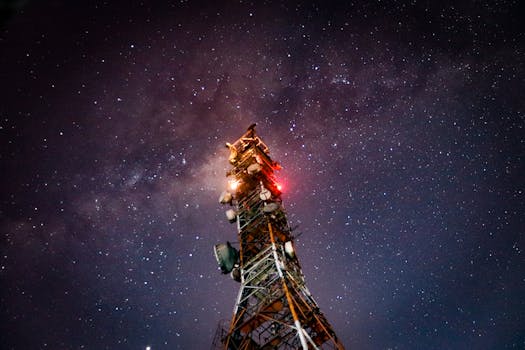Starlink: The Revolutionary Satellite Constellation Changing the Face of Global Internet Connectivity

Starlink: The Revolutionary Satellite Constellation Changing the Face of Global Internet Connectivity
Starlink is a satellite constellation developed by SpaceX, aiming to provide high-speed, low-latency internet connectivity across the globe, bridging the digital divide and transforming the way we communicate. With its innovative technology and ambitious goals, Starlink is poised to revolutionize the telecommunications industry and bring about a new era of global connectivity.
Introduction to Starlink
Starlink is a constellation of low-Earth orbit (LEO) satellites, designed to provide broadband internet services to remote and underserved communities around the world. The project was announced by SpaceX in 2015, with the goal of launching a network of thousands of satellites into LEO to create a high-speed, global internet network. The first batch of Starlink satellites was launched in 2019, and since then, numerous launches have taken place, with over 3,000 satellites currently in orbit.
The Starlink constellation is designed to provide a range of services, including internet connectivity, voice over internet protocol (VoIP) phone services, and low-latency data transmission. The satellites use advanced phased array technology to transmit and receive data, allowing for high-speed connections and low latency. The system is also designed to be highly resilient and fault-tolerant, with multiple satellites providing redundant coverage and automatic failover in case of satellite failure.
How Starlink Works
Starlink uses a combination of satellite and ground-based technologies to provide internet connectivity. The system consists of three main components: the satellites, the user terminals, and the ground stations. The satellites are the backbone of the Starlink network, transmitting and receiving data to and from the user terminals and ground stations. The user terminals are small, flat antennas that can be mounted on buildings or other structures, and are used to connect to the Starlink network. The ground stations are used to connect the Starlink network to the traditional internet, providing a gateway for data to be transmitted and received.
The Starlink system uses a range of technologies to provide high-speed, low-latency connections. The satellites use advanced phased array technology to transmit and receive data, allowing for high-speed connections and low latency. The system also uses advanced modulation and coding techniques to optimize data transmission and minimize errors. The user terminals use beamforming technology to steer the signal towards the satellite, maximizing signal strength and minimizing interference.
Benefits and Applications of Starlink
Starlink has a range of benefits and applications, from providing internet connectivity to remote and underserved communities, to enabling low-latency data transmission for critical applications. The system has the potential to bridge the digital divide, providing internet access to millions of people around the world who currently lack connectivity. Starlink can also be used to provide backup connectivity for critical infrastructure, such as hospitals, emergency services, and financial institutions.
In addition to its consumer and commercial applications, Starlink also has a range of potential uses for government and military agencies. The system can be used to provide secure, low-latency communications for military personnel and government agencies, as well as to support disaster response and recovery efforts. Starlink can also be used to provide connectivity for remote sensing and Earth observation applications, such as monitoring weather patterns, tracking natural disasters, and detecting environmental changes.
Conclusion
In conclusion, Starlink is a revolutionary satellite constellation that has the potential to transform the way we communicate and access information. With its innovative technology and ambitious goals, Starlink is poised to bring about a new era of global connectivity, bridging the digital divide and providing internet access to millions of people around the world. As the Starlink constellation continues to grow and evolve, it will be exciting to see the impact it has on the telecommunications industry and the world at large.
